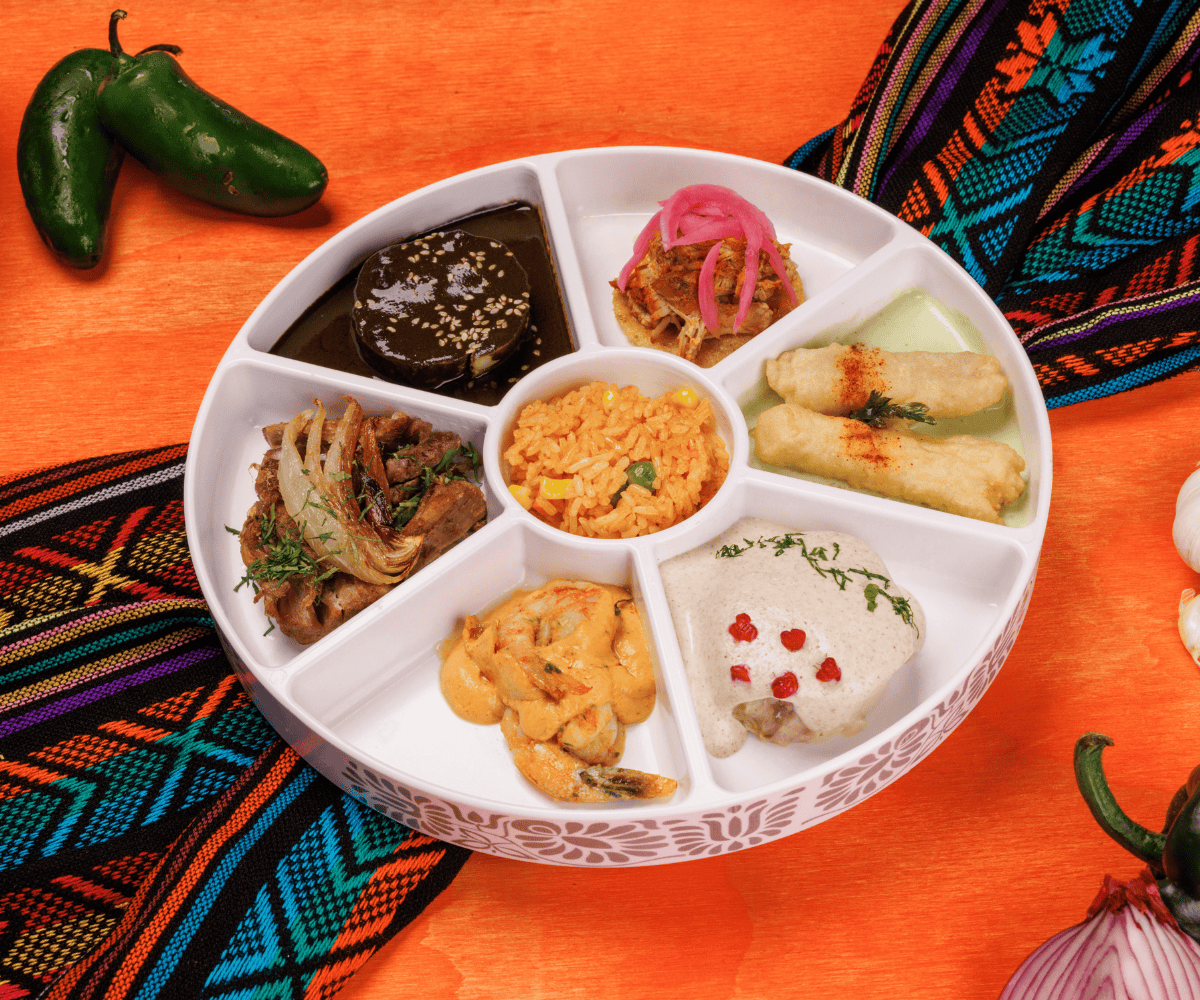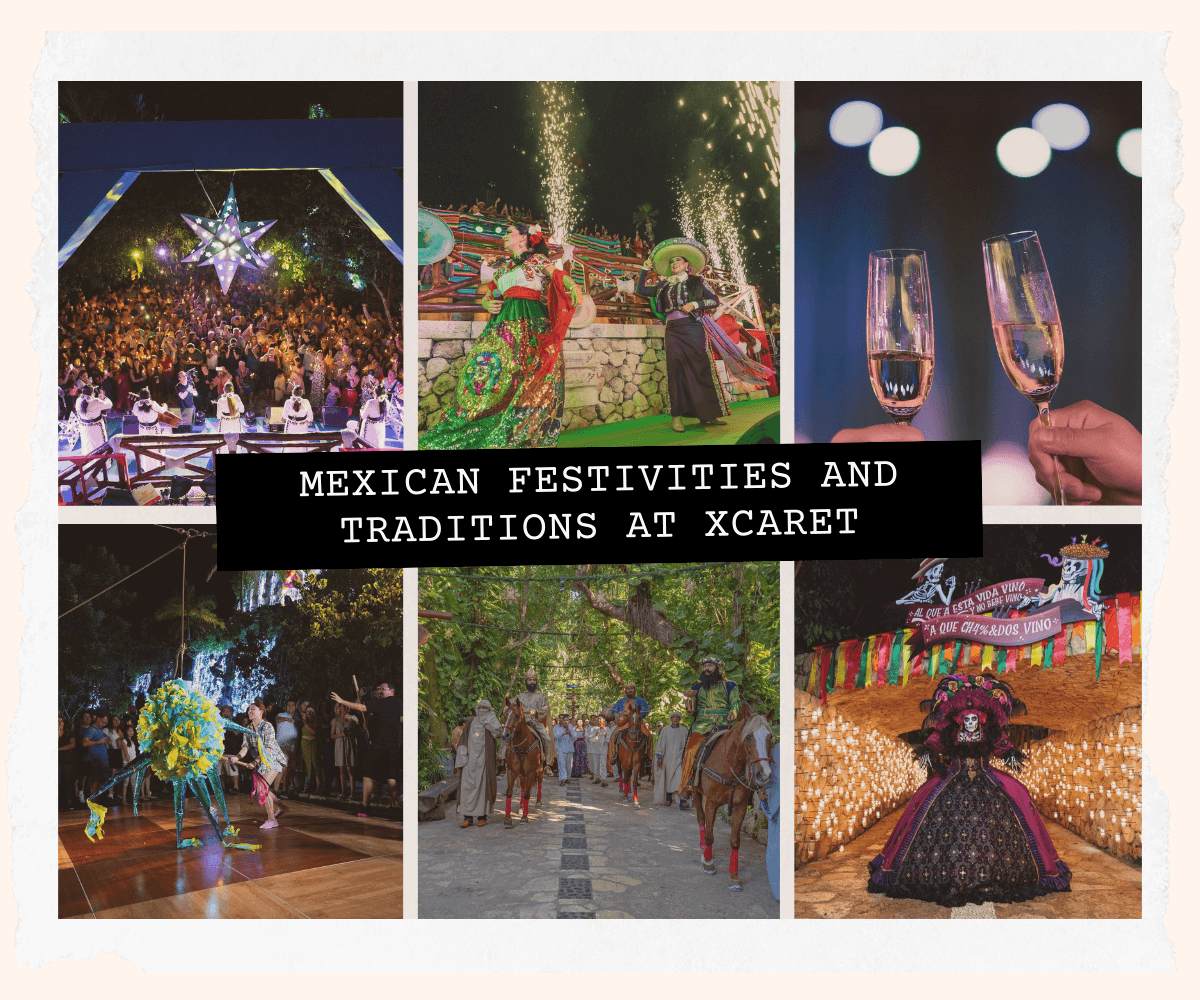The History of La Catrina: An Icon of Mexican Day of the Dead
October 25, 2023
The Evolution of La Catrina: From a social criticism caricature to modern trends
A Mexican Symbol with Over 100 Years of History
The Day of the Dead, a deeply rooted celebration in Mexican culture, is a colorful and lively commemoration that honors and remembers deceased loved ones. One of the most recognized icons of this celebration is La Catrina, an elegantly dressed skeletal div that symbolizes death as an intrinsic part of life and culture.
Its image has been used in various forms of art and design and is now a distinctive and recognizable element of this festivity. If you've been to the Festival of Life and Death Traditions in Xcaret, you've probably even dressed up as Catrina.
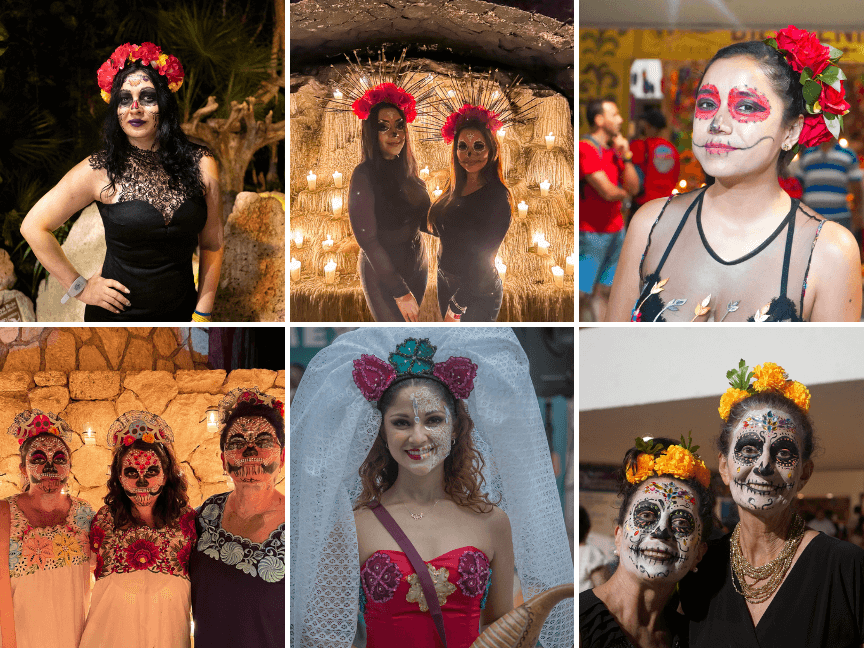
Visitors of the Festival de Tradiciones de Vida y Muerte by Xcaret disguised as Catrinas
What is a Catrina?
La Catrina is an iconic character and div of Mexican culture, mainly associated with the Day of the Dead, a traditional Mexican celebration that honors the deceased. It is an elegant, sophisticatedly dressed skeletal representation, often wearing an adorned hat and an elegant dress.
Who is the creator of La Catrina?
La Catrina has its roots in Mexican iconography and was popularized by the famous Mexican painter, illustrator, and caricaturist from Aguascalientes, José Guadalupe Posada, in the early 20th century, during the post-revolutionary period in Mexico.
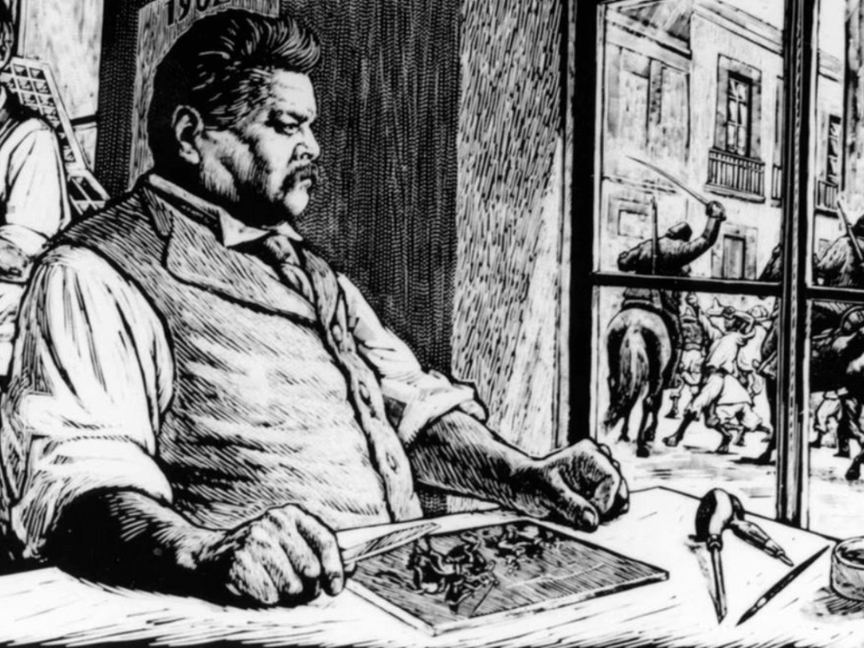
An ilustration of José Guadalupe Posada by eluniversal.com
Posada created the image of La Catrina as a satirical critique of the upper class and their disconnect from the realities of life and death. Initially, the skeleton did not wear a dress; it only wore a hat, which some interpret as a critique of the poverty in which Mexicans lived at that time, with this phrase from its creator:
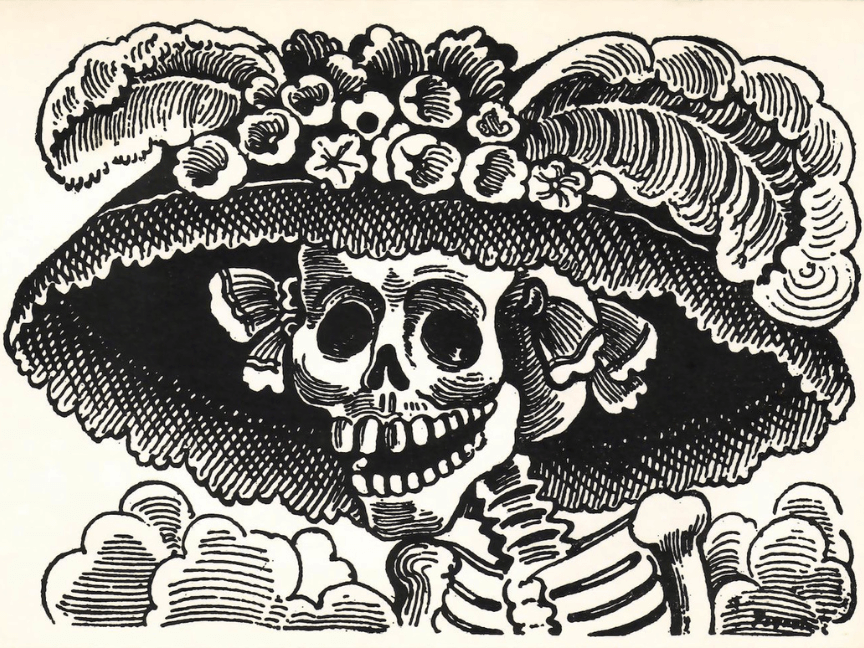
La Calavera Garbancera, by José Guadalupe Posada
"…en los huesos, pero con sombrero francés con sus plumas de avestruz"
José Guadalupe Posada.
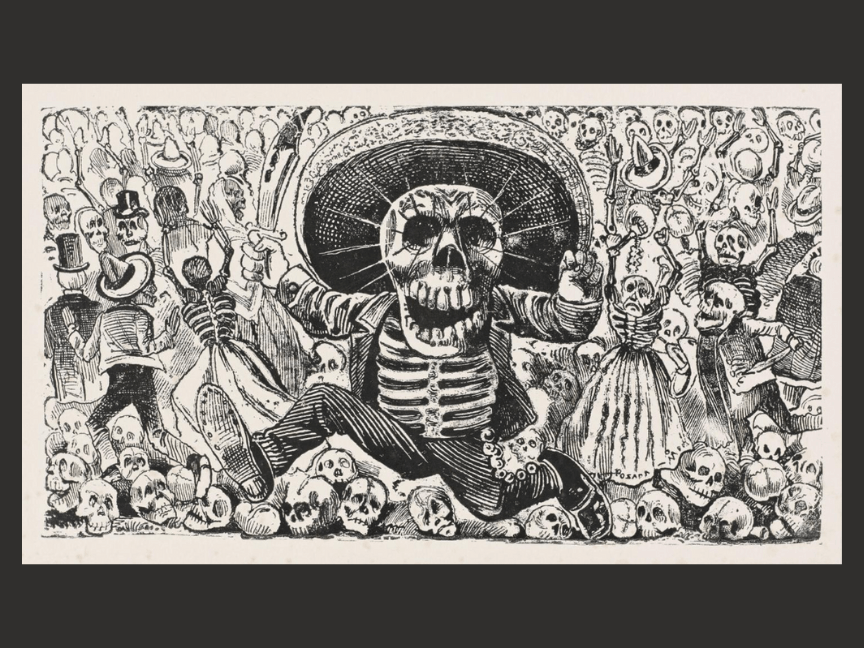
La Calavera Oaxaqueña Calavera del montón. Número 1 by José Guadalupe Posada
Currently, in Aguascalientes, Mexico, the Festival of La Catrina is celebrated annually in honor of José Guadalupe Posada and his iconic creation. The festival includes parades, art exhibitions, and cultural activities related to La Catrina and its significance in Mexican culture.
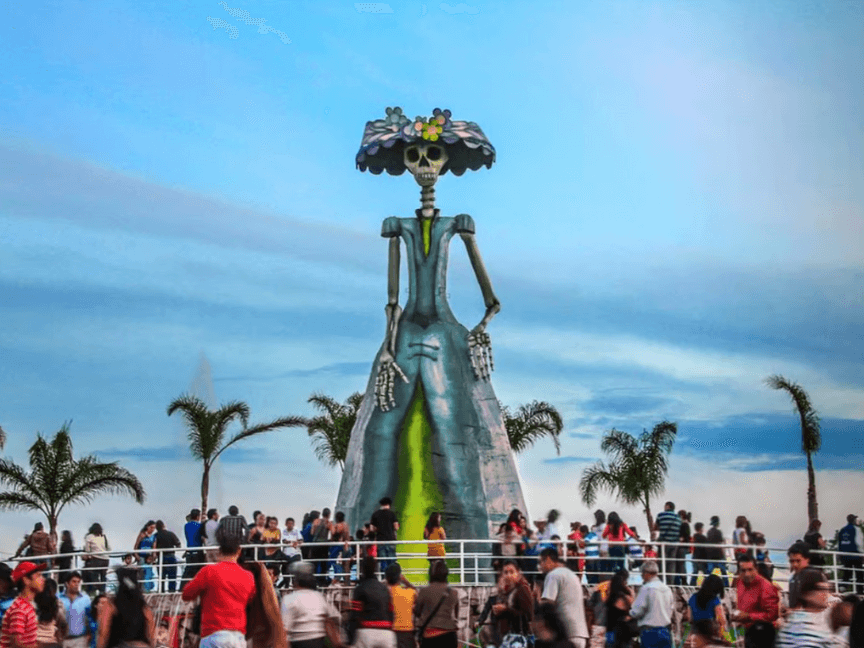
Picture: Festival de Catrinas en Aguascalientes by elsiglodetorreon.com
Who named La Catrina?
The name "La Catrina" and its popularization come from the famous Mexican muralist and artist Diego Rivera.
In his mural "Dream of a Sunday Afternoon in the Alameda Central" (1947), Diego Rivera included a famous representation of La Catrina in a scene that pays homage to Mexican history and culture. This mural painting further helped popularize the image of La Catrina with a dress, as we recognize it today in Mexican culture and the celebration of the Day of the Dead.

"Sueño de una tarde dominical en la Alameda Central" (1947) By Diego Rivera. Picture: NOE PARRA
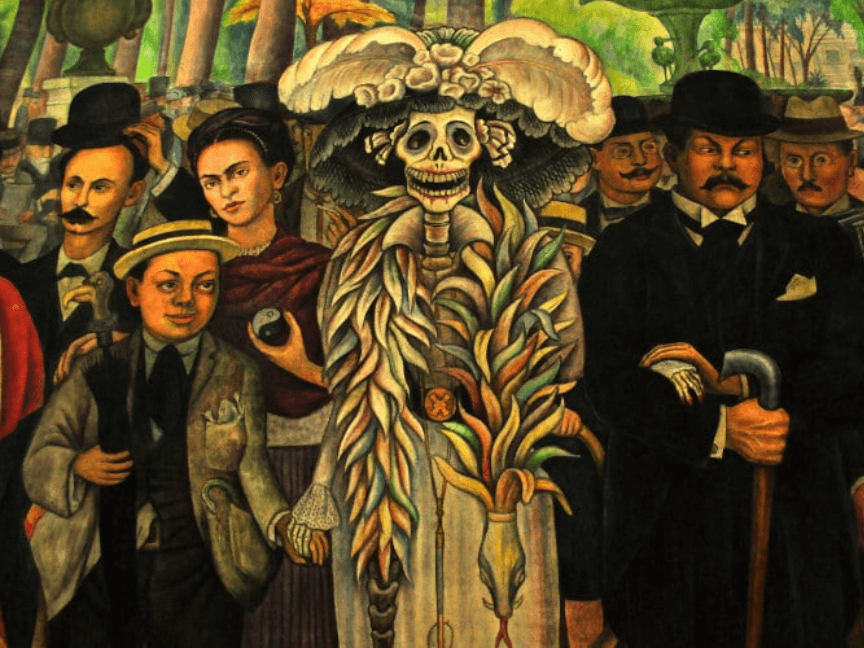
Characteristics of La Catrina
Today, the costume and makeup of Catrina are the most widely used in Mexico. It has evolved from being a drawing on paper to becoming a fully alive element of our Mexican culture. Here are the elements that characterize this character. But first, a fun fact: did you know France influenced La Catrina's aesthetics? Posada and other artists of the time were inspired by the elegance and sophistication of the French high society to create this div due to the high fashion and lifestyle of the early 20th-century European elite.
-Stylized human skeleton: La Catrina is depicted as a human skeleton with a stylized and elegant aesthetic.
-Elegant clothing: She usually wears high-fashion or elegant attire, such as a long and adorned dress, gloves, decorative hats, and other accessories that give her a sophisticated and aristocratic look.
-Adorned hat: La Catrina is often depicted with an embellished hat, such as a wide-brimmed hat or an elegant headdress. These hats usually have decorative elements like flowers, feathers, ribbons, or other ornaments.
-Elaborate facial makeup: She is made up elaborately, mimicking the appearance of a skull. This makeup often includes fine lines that simulate skull anatomy, emphasizing the eyes, nose, and mouth.
-Stylized smile: She is depicted with a stylized and cheerful smile, reflecting the festive and playful attitude associated with the Day of the Dead.
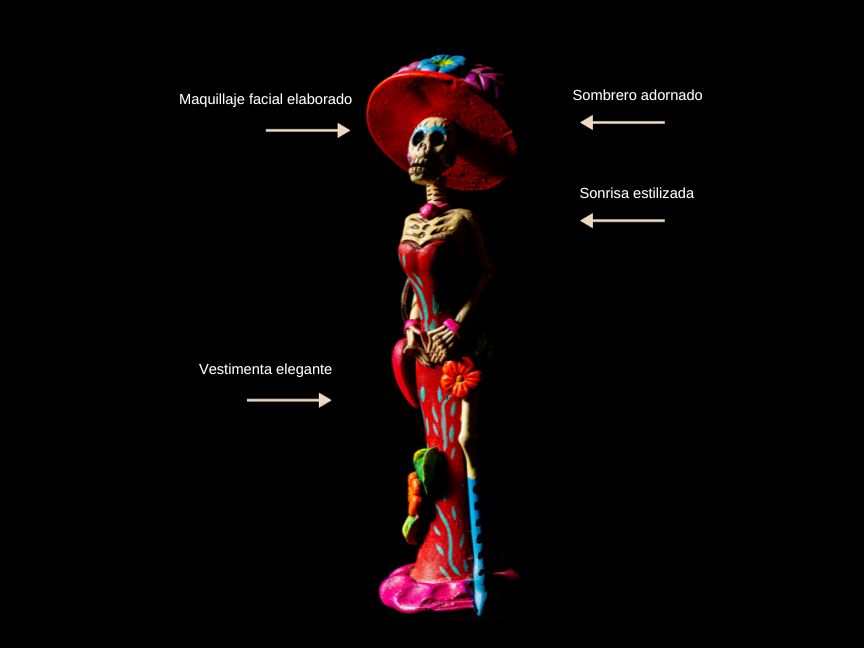
La Catrina Today
As mentioned earlier, La Catrina is a Mexican symbol representing the Day of the Dead. This image is an art form seen in various expressions such as paintings, sculptures, theater, ceramics, engravings, graffiti, and more. Many artists have incorporated elements of La Catrina into their work, merging tradition and modernity, keeping Posada's creation relevant.
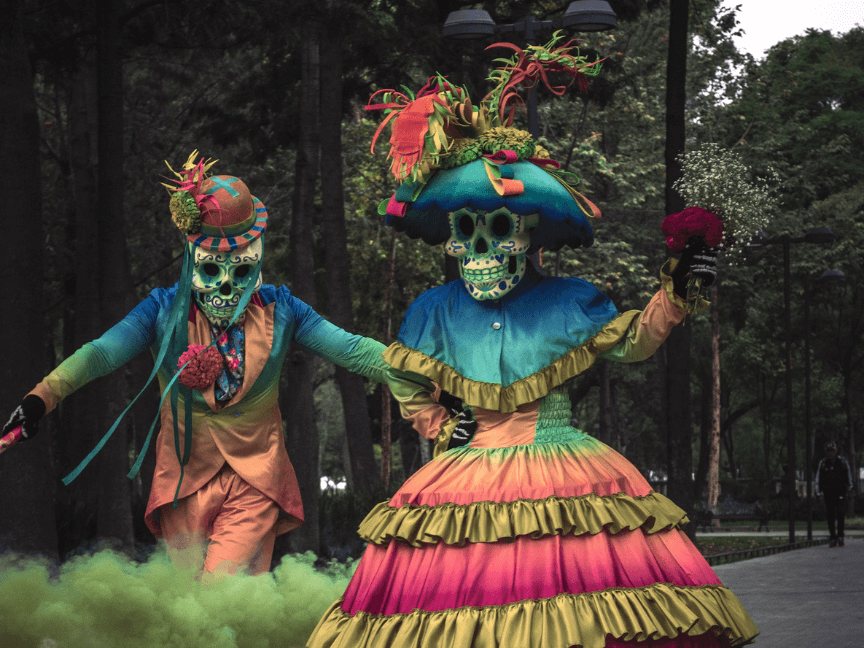
Although initially a social critique, La Catrina symbolizes cultural pride and respect for life and death.

Editora de Blog Xcaret. Comunicóloga que ama viajar, escribir, tomar fotografías y estar siempre rod...

Posts Relacionados
Grupo Xcaret
Hotels

